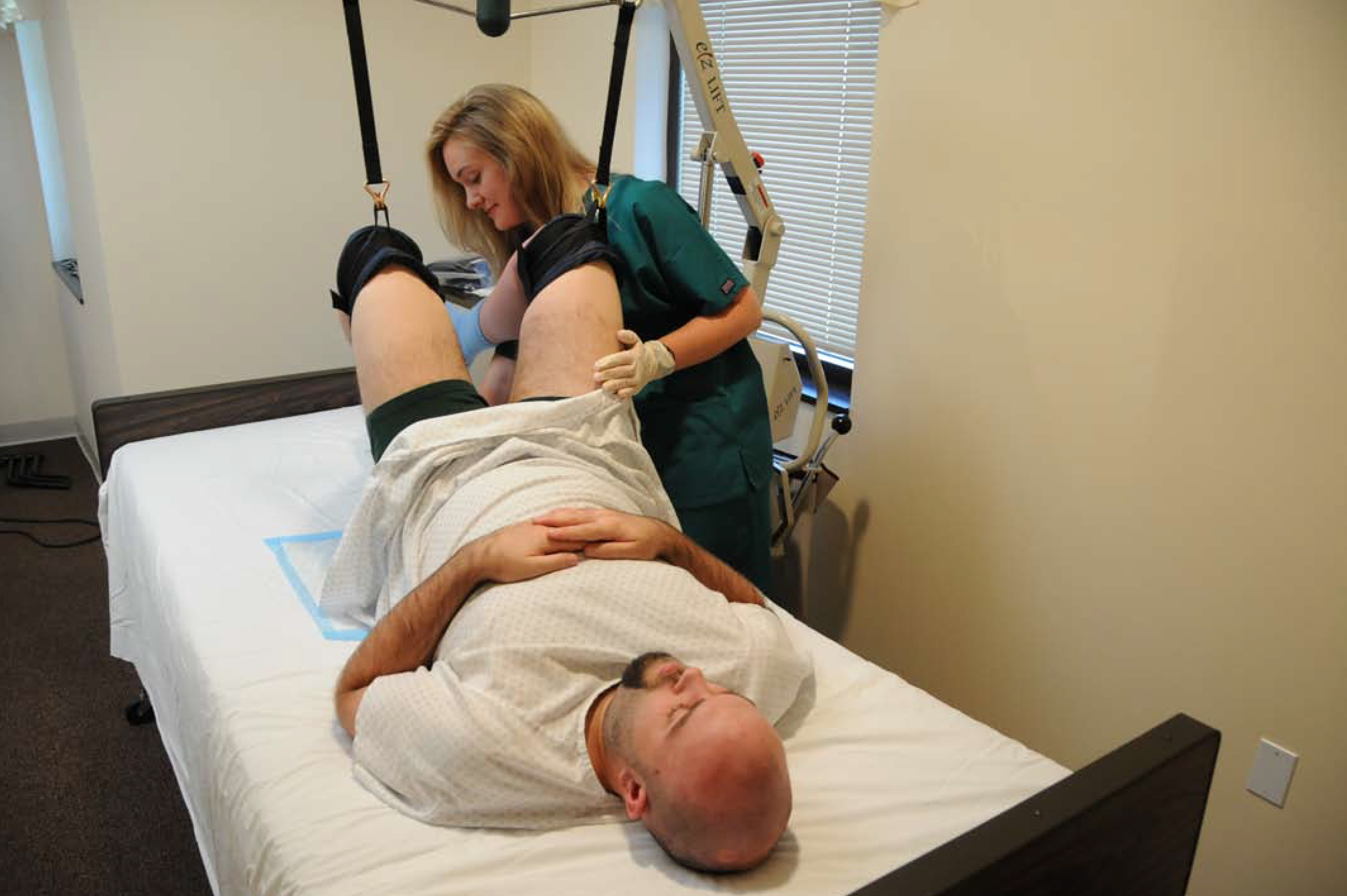Mary Webb RN, BSN, MA, CIC County Of San Mateo, San Mateo Medical Center, Long Term Care Division, San Mateo, CA
Introduction
Turning and lifting of patients to provide hygiene to the bedridden, incontinent patient is performed many times a day. If patients are not cleaned and remain in moisture, this may lead to patient skin breakdown and pressure ulcers. Caregivers might sustain injuries performing this task. Lifting and turning of patients can result in injuries to caregivers, often in the form of back injuries, due to strain and fatigue. These injuries may result in loss of work and or workers comp claims.
Objective
To evaluate the use of lifting straps and process with a patient lifter with T-bar technology allowing one caregiver the ability to safely suspend the lower portion of the patient’s body for hygiene cleaning, changing and or treatment of wound and pressure ulcers. This process would eliminate the need for caregiver lifting and additional staff to assist in these procedures.
Results
One caregiver, using the straps and lifting process has been able to clean and change a patient, not having to wait for assistance from other members of the team. The initial five patients remain with the lifting straps and comment that it is much easier and more dignified to go through this procedure, than being rolled several times by many people in the method currently practiced. Product is able to assist the extremely contracted patient as well as the larger patient, (over 350 pounds). No pressure ulcer development or skin breakdown has been noted. No workers comp claims have been initiated on this unit from strain or fatigue.
Methodology
Nursing assistants were asked to provide their concerns in caring for the bedridden patients. Overwhelming response was the concern for the hygiene of these identified patients when the additional one or more staff is needed and not quickly available. Also concern expressed for health of caregivers when required to perform the task of lifting and turning patients. One unit participated in the evaluation. One nursing assistant was identified as the team leader for the project and helped train other staff who may float to the unit. Training on the product use was provided. Patients, who were able to respond, were asked if they would try the lift straps. Thighs of patients were measured and size of product selected. Product was initiated
Benefit to Caregivers
Caregivers will no longer be required to lift or turn patients to clean them. Thus injuries resulting from changing and cleaning of patients will be much less likely. One caregiver will be able to easily change and clean patients, making it easier to perform his or her duties in a timely manner, rather than having to wait for assistance.
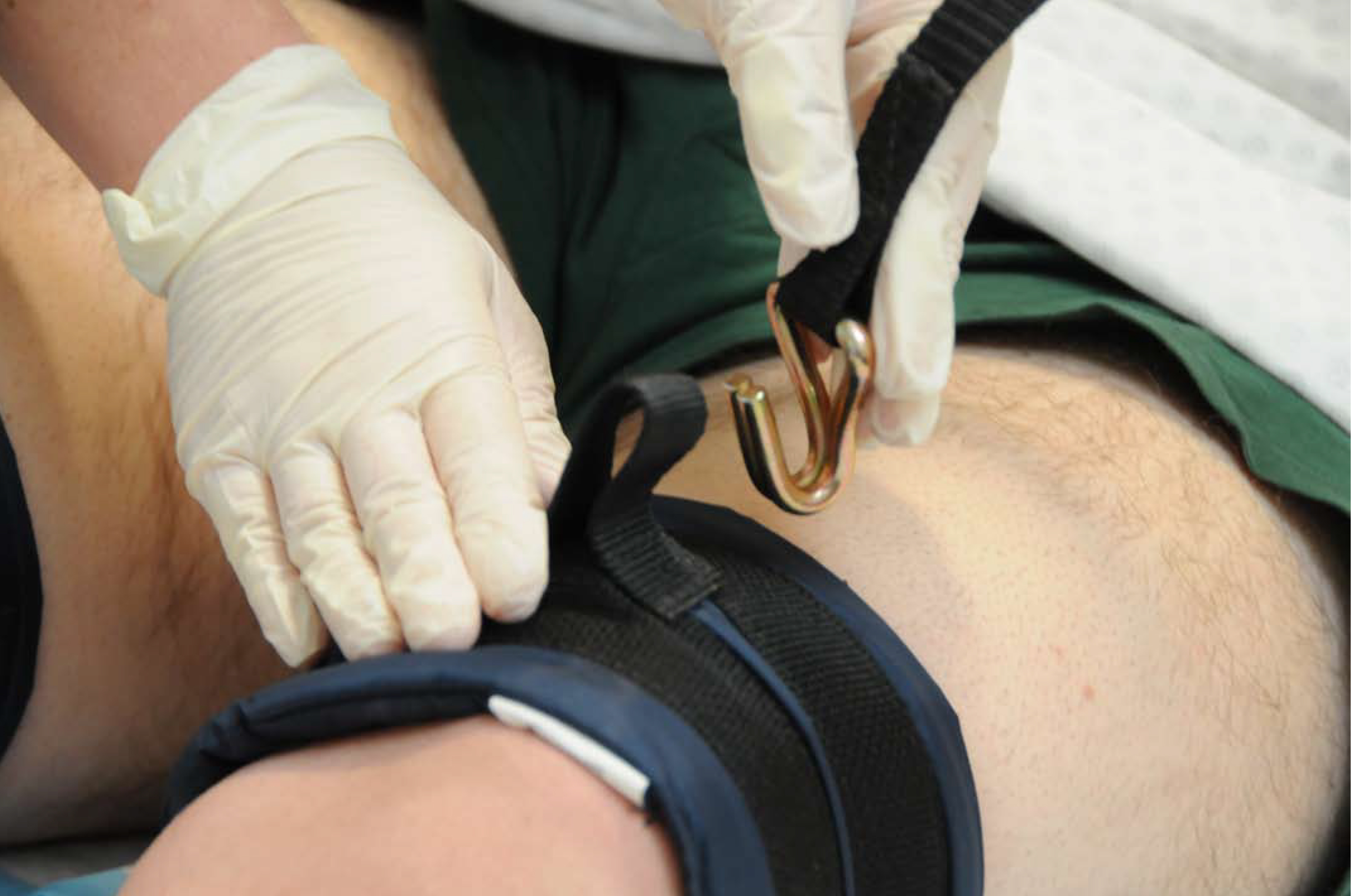
Secure strap to each leg while person is lying down in bed.
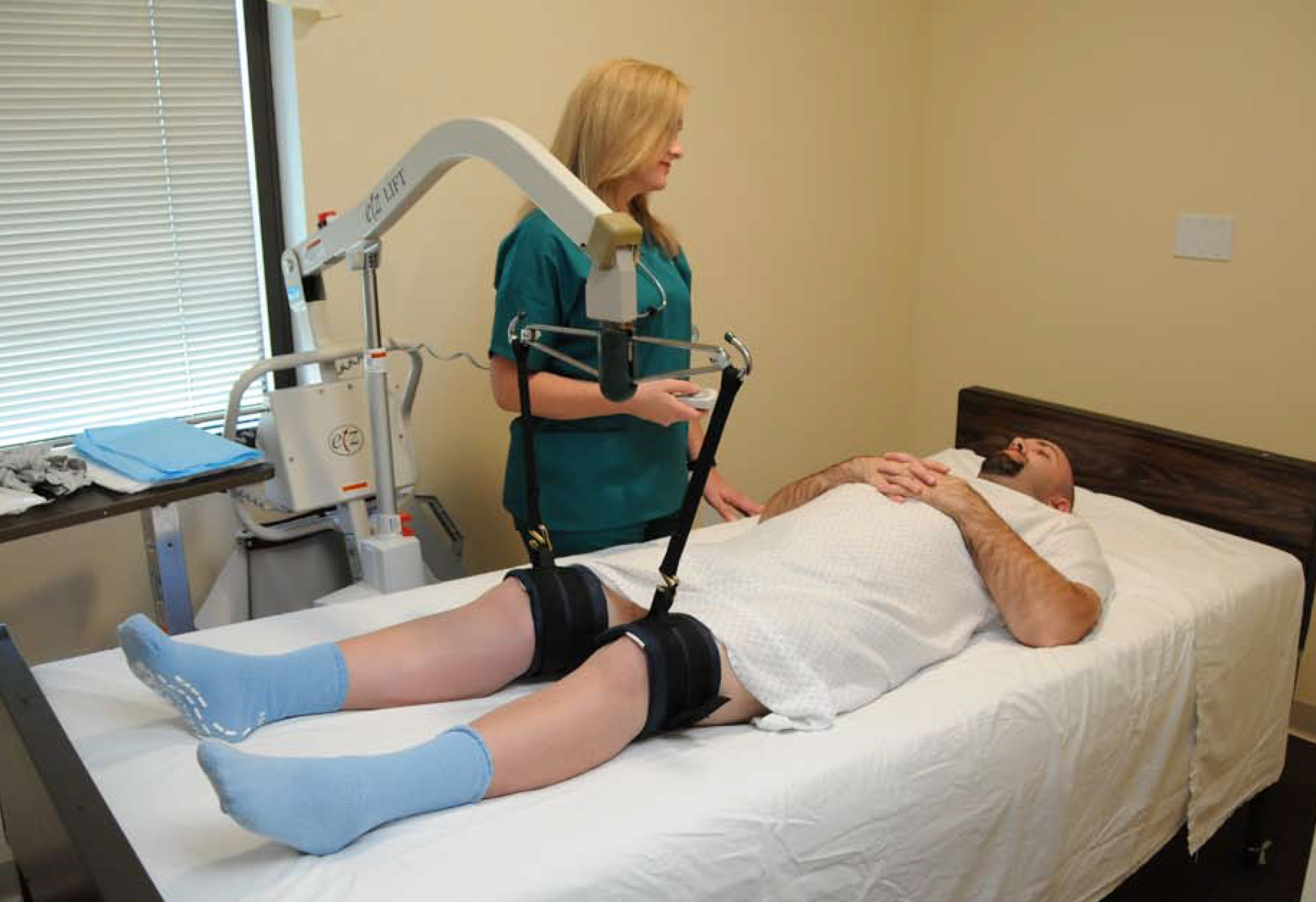
Secure each strap to lift bar of the lifting device.
Benefit To Patient
- Lifting is gentle to the fragile or confused or elderly patient.
- Allows for changing more often, keeping patient drier.
- Patient does not have to be turned from side to side, providing less stress to patient.
- Linen will not have to be pushed under patient, thus reducing friction and possible shear.
- One caregiver will be able to perform function instead of many, which allows the patient more dignity.
- Patient will be kept overall in better health.
Benefit to Facility
- Facility will be kept cleaner.
- Less repetitive stress and other injuries to caregivers.
- Less Worker’s Compensation costs.
- The effects of staff cutbacks and repurposing, can be mitigated by utilizing this lifting process and product.
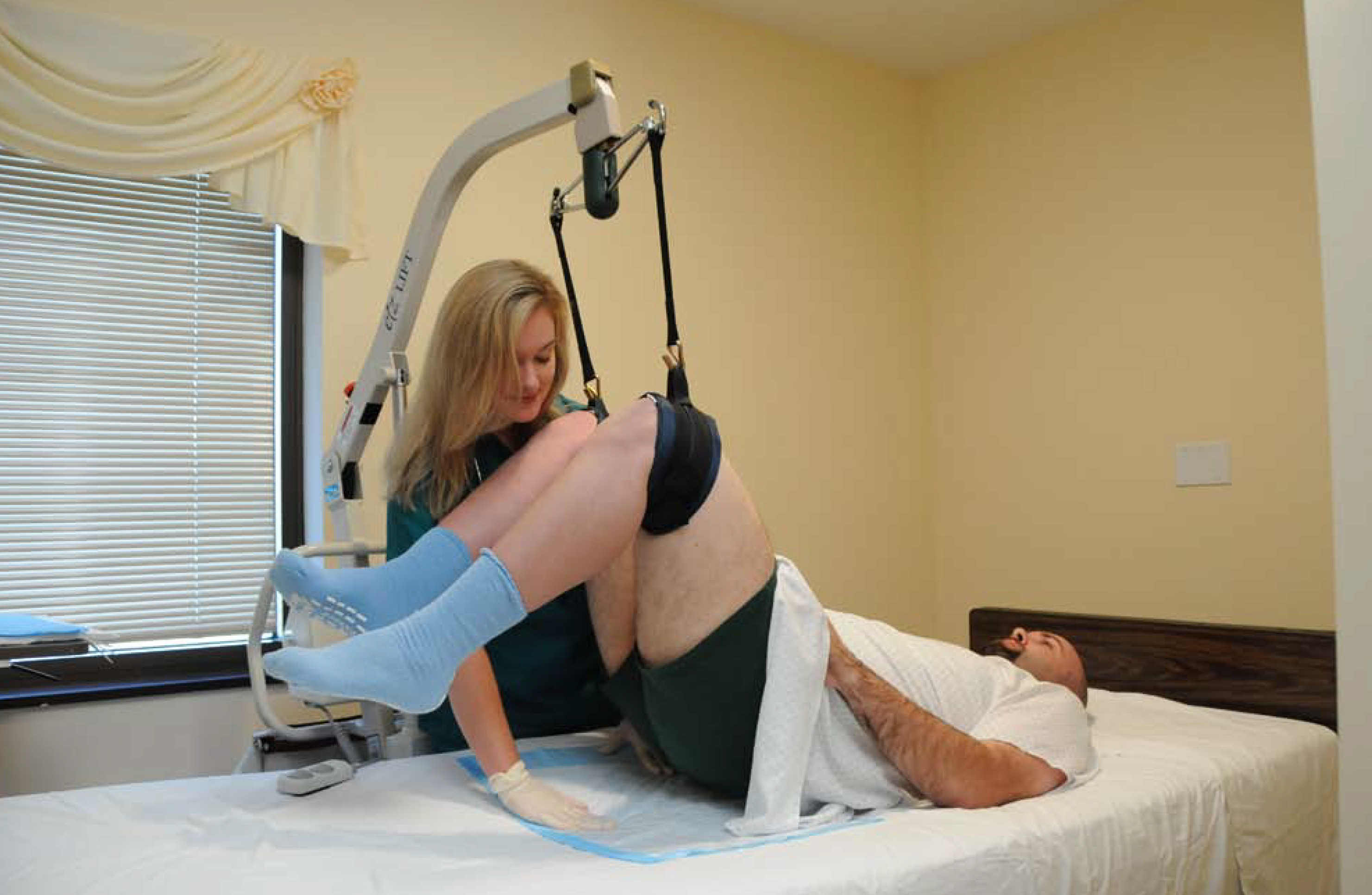
Gently raise the patient’s body until sufficiently high enough to easily clean or change.
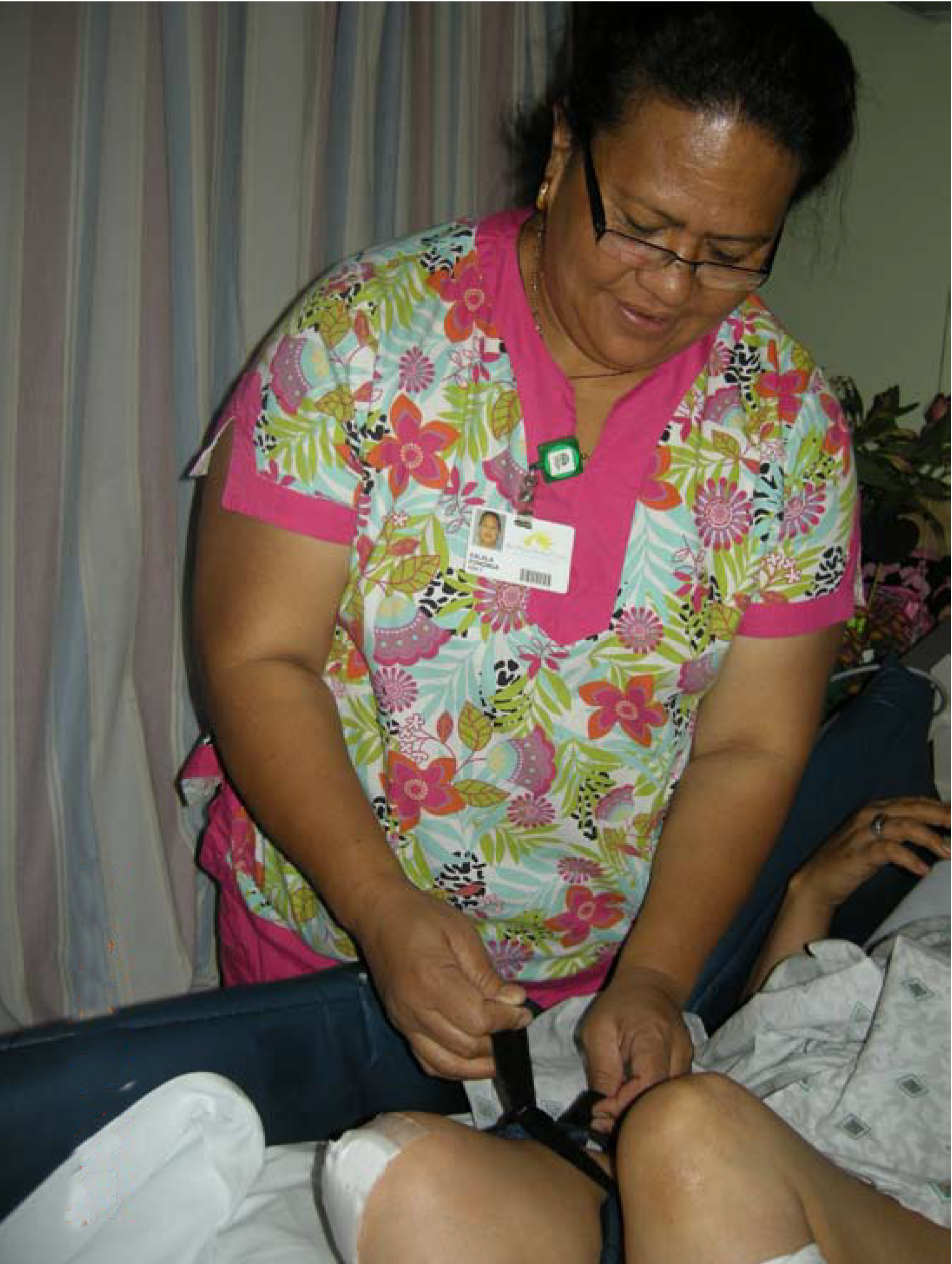
Nursing Assistant Team Leader Kalala applying lifting straps at San Mateo Medical Center Long Term care.
Conclusion
These new lifting straps and process are well received by the staff and the patients. Other units in this complex have come to observe and are now asking for the product on their unit.
Reference
Braden Scale, 1997, moisture and mobility for predicting pressure ulcers
